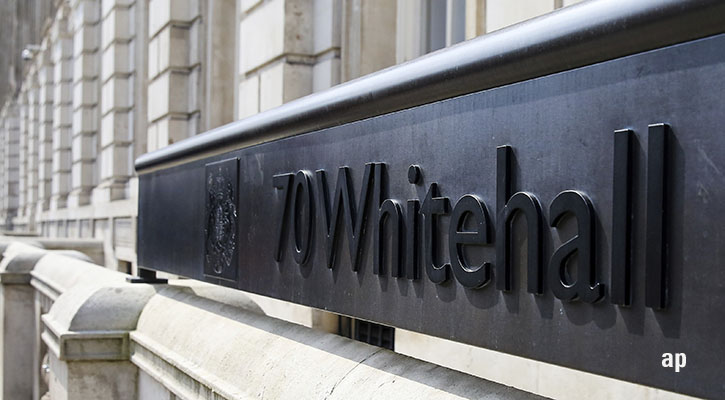
UK public sector net borrowing reached £21.5 billion in March, the second-highest March borrowing since monthly records began in 1993, according to the Office for National Statistics. This figure, which excludes the banking bailouts, was £16.3 billion higher than in March 2022, as the cost of of the energy support scheme weighed on the public finances.
Receipts, which included taxes, increased 2.3% in March year on year to £88 billion, but total public sector spending increased by nearly 20% to £110.3 billion.
The March figures follow the highest February borrowing since monthly records began in 1993, largely due to substantial spending on the energy support scheme. January figures showed a surplus of £6.9 billion as bumper self-assessment tax receipts boosted Treasury coffers.
This ONS dataset also includes borrowing figures for the full financial year. The UK government borrowed £139.2 billion in the 2022-2023 financial year, £18.1 billion higher than the previous year. This represents the fourth highest government borrowing on record, the ONS said, behind 2021, when Covid led to a massive increase in spending, and 2010 and 2011 after the financial crisis, which led to a nationalisation of key banks.
But this would be £13.2 billion less than the borrowing predicted by the Office for Budget Responsibility (OBR) in the March Budget, which potentially gives the government more scope to cut taxes of increase spending, says Hargreaves Lansdown head of money and markets Susannah Streeter.
"There may be a bit more wriggle room but the government is still in a tight spot, given its pledge to bring down debt as a share of GDP," which at £139.2 billion is 5.5% of GDP. This was down from 15% of GDP in 2020-2021, the pandemic-affected year, but the target is for a fall to below 3% in the coming five years.
The next "fiscal event" will be the Autumn Statement in 2023, which comes ahead of a likely General Election in 2024. Tax changes unveiled in the previous Autumn Statement have just kicked in, meaning more people will be paying more tax in this financial year.
But the 2022-2023 figures are provisional. The ONS expects the full-year borrowing to hit £152.4 billion, which would be £31.3 billion higher than the 2021-2022 financial year.
Budget Deficit
The budget deficit, a measure politicians zoomed in on during the austerity era after 2010, was £87.4 billion, £15.8 billion more than the previous year. It's the sixth highest budget decifit since records began in 1946.
This figure represents government borrowing to fund day-to-day spending, and is lower than the total public sector net borrowing figures because capital expenditure/net investment is excluded. Adding the budget deficit of £87.4 billion to the capital expenditure figure of £51.8 bllion leads to the total figure of £139.2 billion.
Public sector net investment includes roads, buildings and weapons, research and development spending and grants to private sector projects such as social housing.
The budget deficit should not be confused with the national debt, which stands at the much larger £2.5 trillion.
March Budget
In his Spring Budget in March, UK chancellor Jeremy Hunt confirmed that the energy price guarantee, which caps average household bills at £2,500, will be extended at its current level from April to June. According to the Budget red book, this will cost the government £2.5 billion in the current financial year. The monthly energy support scheme, which provided £67 a month off energy bills, has now ended.
As well as energy support for households, government borrowing is also significantly higher because of the elevated cost of its interest payments. The state funds spending plans through issue debt through bonds – since inflation spiked these bonds, known as gilts, must pay a higher rate of interest. And some of these bonds are “index linked”, which means they are tied to RPI inflation, which hit 13.5% in February. The OBR forecasts debt interest to hit more than £114 billion this year.



















.jpg)








